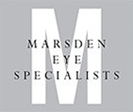Refractive Error
In a normal eye, light passes through all the optical structures such as the cornea and the lens to focus on a single point on the retina which allows us to see clearly and have the best vision possible. Refractive errors are optical imperfections in the eye which cause light to not focus on its intended spot on the retina and that causes blur. Refractive error is measured in a unit called diopters (D) and using clinical reasoning and machines can be refined and made into glasses to correct the vision.
Cataracts
A cataract is one of the most common eye conditions and causes blurry vision due to clouding of the natural lens in the eye.
The human lens is located behind the iris (the coloured portion of the eye), and it is mostly made up of water and proteins. These specific proteins provide the lens its transparent structure.
Glaucoma
Glaucoma is elevated pressure in the eye that can lead to compression and damage to the optic nerve causing loss of vision.
When light enters the eye, it is focused onto on a light-sensitive layer at the back of the eye called the retina. The retina converts these light rays into electrical signals which are carried by the optic nerve to the brain where vision is perceived. Increased pressure within the eye can cause damage to the optic nerve and is usually due to poor drainage of the fluid present within the eye. Drainage occurs through a network of channels in the region where the cornea and iris meet.
Retinal Conditions
 Age Related Macular Degeneration
Age Related Macular Degeneration
 Diabetic Retinopathy
Diabetic Retinopathy
 Vascular Eye Disease
Vascular Eye Disease
 Flashes and Floaters
Flashes and Floaters
 Retinal tears and Detachment
Retinal tears and Detachment
Corneal Conditions & Dystrophies
Neurological Eye Conditions
Welcome to Marsden Eye Specialists' dedicated page on neurological eye conditions. Our team of experts is here to provide you with valuable information about various neurological eye conditions, their common signs and symptoms, and how we can help you manage them effectively.
Uveitis & ocular inflammation
Ocular inflammation is swelling and inflammation of the eye tissue as a result of inflamm. The part of the eye that is commonly affected is the middle layer of the eye known as the uvea which consists of the iris, ciliary body and choroid. Inflammation of the uvea is known as uveitis. Uveitis can occur in the front, middle, back and the whole of the eye as well.
Strabismus
Strabismus is a visual defect in which the eyes are misaligned and point in different directions. The misalignment may always be noticeable, or it may come and go. One eye may be directed straight ahead, while the other eye is turned inward, outward, upward or downward. The turned eye may straighten at times and the straight eye may turn.
Paediatric Eyes Problems
Common paediatric eye problems that stunt visual development include refractive error, amblyopia, congenital cataract to name a few, click the link to read more.


 n
n